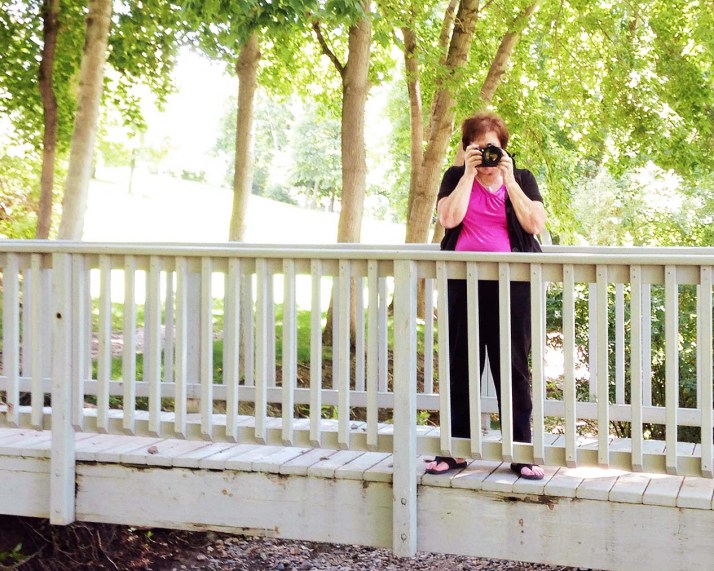Originally posted on Make It from Your Heart: January 12, 2015
So you want to learn how to take good photos, do you? You’re not alone. With technology these days, it seems like it would be pretty much impossible to take a bad picture, yet we all end up with our fair share of photos that make us cringe. The red eyes, the shadowy faces, the artwork shots that look like they were taken in a cave—we’ve all been there. But the good news is there’s hope! With a little knowledge, you can take your photos from blah to brilliant and upgrade your layouts and blog posts from meh to marvelous. Let’s get started.

Learn the power behind the buttons.All of the bells and whistles on your camera may seem overwhelming at first, but if you take a few moments to sit down, read the guidebook, and master a few key features, your pictures will reap the benefits. It won’t take any longer than scrolling through Facebook or watching an episode of your favorite sitcom. Plus, you will likely be able to find helpful tutorials through online outlets, like YouTube.
Be conscious of lighting.
When it comes to lighting amateur photos, the natural light of the sun is your best bet. But channel this power wisely. Always make sure the light is indirect. Try to take photos near a window, an open door, or even a covered porch. When possible, avoid using your flash—it can make things look flat and just plain unnatural.
Pay attention to backgrounds.
Hanging laundry? Bad. Cozy fireplaces? Good. Pay attention to what’s lurking in the background of your photos. Whatever it is, it’s more noticeable than you think.
Keep the props simple and meaningful.
Remember that the reason you’re taking the picture in the first place is to highlight your subject! Don’t lose track of the subject by overloading the photo with unnecessary props and clutter. A few simple and visually enticing props, such as a string of ribbon or a vase of flowers, are all you need to capture the right mood.
Get up close and personal.
Don’t be afraid to get cozy with your subject, whether it’s your artwork, your child, or the cat from next door. Let the subject take up the majority of the frame. If your subject is human, hold the camera at their eye level to capture the full force of their gaze.
Be patient enough to snap lots of photos.
Thanks to the advent of digital photography, we no longer live in a day when we have to fret about how many exposures we have left. Take advantage of this freedom and snap away! Have the patience to keep taking pictures and adjusting as you go until you capture just the right shot.
Edit your photos after you take them.
Photo editing software programs can perform visual wonders in mere seconds. If you don’t want to lay down the big bucks for programs like Adobe® Photoshop®, try free services like picmonkey.com. For smartphones, try apps like Snapseed or PicTapGo. Even just a few tweaks—like brightening and sharpening your photo—can make a world of difference.
With all that being said, always remember that you are the photographer so your photos should reflect your unique perspective. Keep these basic guidelines in mind, but don’t be afraid to follow a gut instinct or pursue a wild idea. Photos are their own special form of art, so get creative! Start from right where you are and remember that every professional was once an amateur.

No comments:
Post a Comment